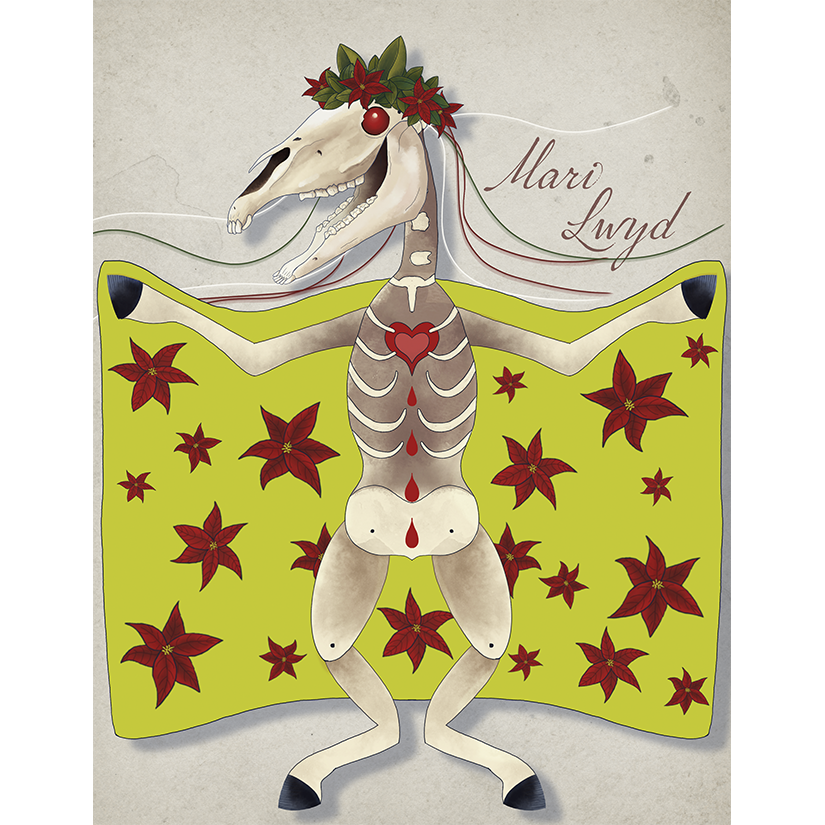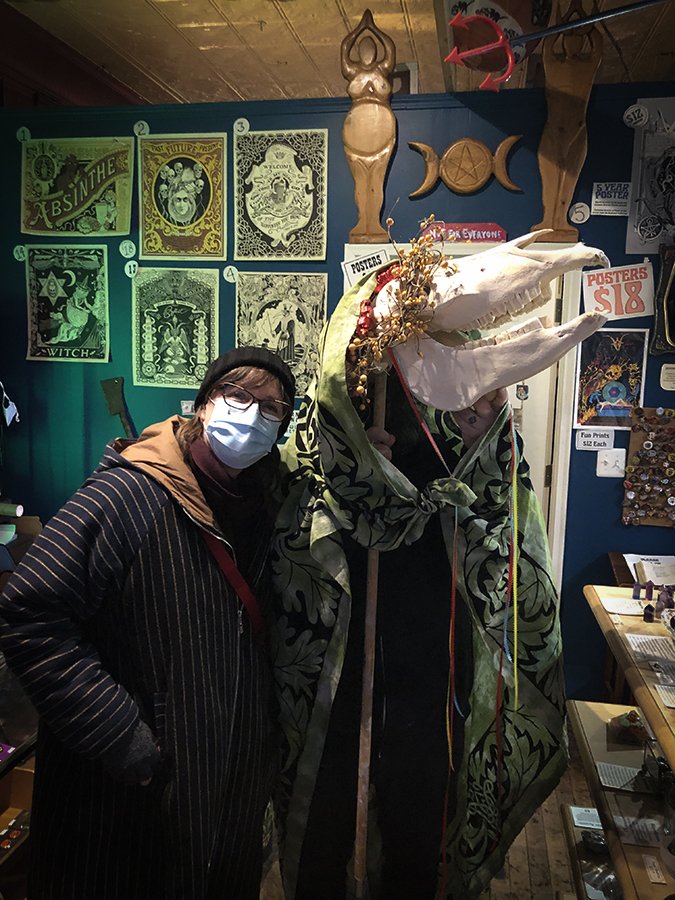Mari Lwyd: A Welsh Winter Tradition
As winter blankets the Welsh countryside in a soft, chilly embrace, a unique and enigmatic tradition comes to life – the Mari Lwyd. This ancient Welsh custom, dating back centuries, brings a touch of mystery and whimsy to the winter season. In this post, we will learn about the story behind Mari Lwyd, exploring its origins, customs, and cultural significance that make it a cherished part of Wales' rich folklore.
Origins of Mari Lwyd
The name "Mari Lwyd" translates to "Gray Mare" in English, and this tradition is deeply rooted in Welsh history. Though the exact origins of Mari Lwyd are unclear, it is believed to have ancient pagan roots that evolved over time, blending with Christian influences. The tradition is most closely associated with the folk customs of the border regions of Wales, particularly in Glamorgan and Gwent.
The 'Mari Lwyd' at Llangynwyd 1920
National Library of Wales Photo Album 929 A
The Mari Lwyd Procession
At the heart of the Mari Lwyd tradition is a festive and spirited procession. Typically held during the Christmas season and sometimes extending into the New Year, the Mari Lwyd parade involves a horse skull mounted on a pole, adorned with colorful ribbons, bells, and other festive decorations. The horse skull symbolizes the spirit of the Mari Lwyd.
Accompanied by a group of revelers, often dressed in traditional Welsh attire, the Mari Lwyd visits homes and pubs, engaging in a unique form of rhyming exchanges known as "pwnco." The participants engage in a playful and poetic back-and-forth, with the residents of the homes or patrons of the pubs responding to the challenges posed by the Mari Lwyd party.
Cultural Significance
Mari Lwyd is more than just a seasonal spectacle; it embodies the spirit of community, tradition, and the age-old practice of wassailing. Wassailing involves singing and toasting to ensure a bountiful harvest or a prosperous year ahead. The Mari Lwyd tradition, with its festive parades and rhyming challenges, fosters a sense of camaraderie and shared celebration within the community.
The symbolism of the gray mare also holds cultural significance, representing the cycle of life and death, as well as the connection between the natural and supernatural realms. Through Mari Lwyd, communities come together to celebrate their heritage, share laughter, and revel in the joyous spirit of the season.
Me & Mari Lwyd 2022
If you ever find yourself at the Buckland Museum of Witchcraft & Magick in Cleveland during December, you may run into this character.
Preserving Mari Lwyd in Modern Times
While the Mari Lwyd tradition faced a decline in the mid-20th century, efforts to revive and preserve this unique Welsh custom have borne fruit in recent years. Communities and cultural enthusiasts are rediscovering the charm and significance of Mari Lwyd, ensuring that this ancient tradition continues to captivate and delight generations to come.
Mari Lwyd, with its hauntingly beautiful horse skull, vibrant decorations, and lively processions, stands as a testament to Wales' rich cultural tapestry. As communities come together to celebrate the winter season with the Mari Lwyd tradition, they not only honor their heritage but also create lasting memories and connections that bridge the past with the present. In the heart of winter, Mari Lwyd gallops through the Welsh countryside, a symbol of resilience, community, and the enduring magic of folklore.
Designed by Erika Karl
Download a fun Mari Lwyd paper doll, which can also double as an ornament. Mari Lwyd is game for anything as long as it’s festive.




